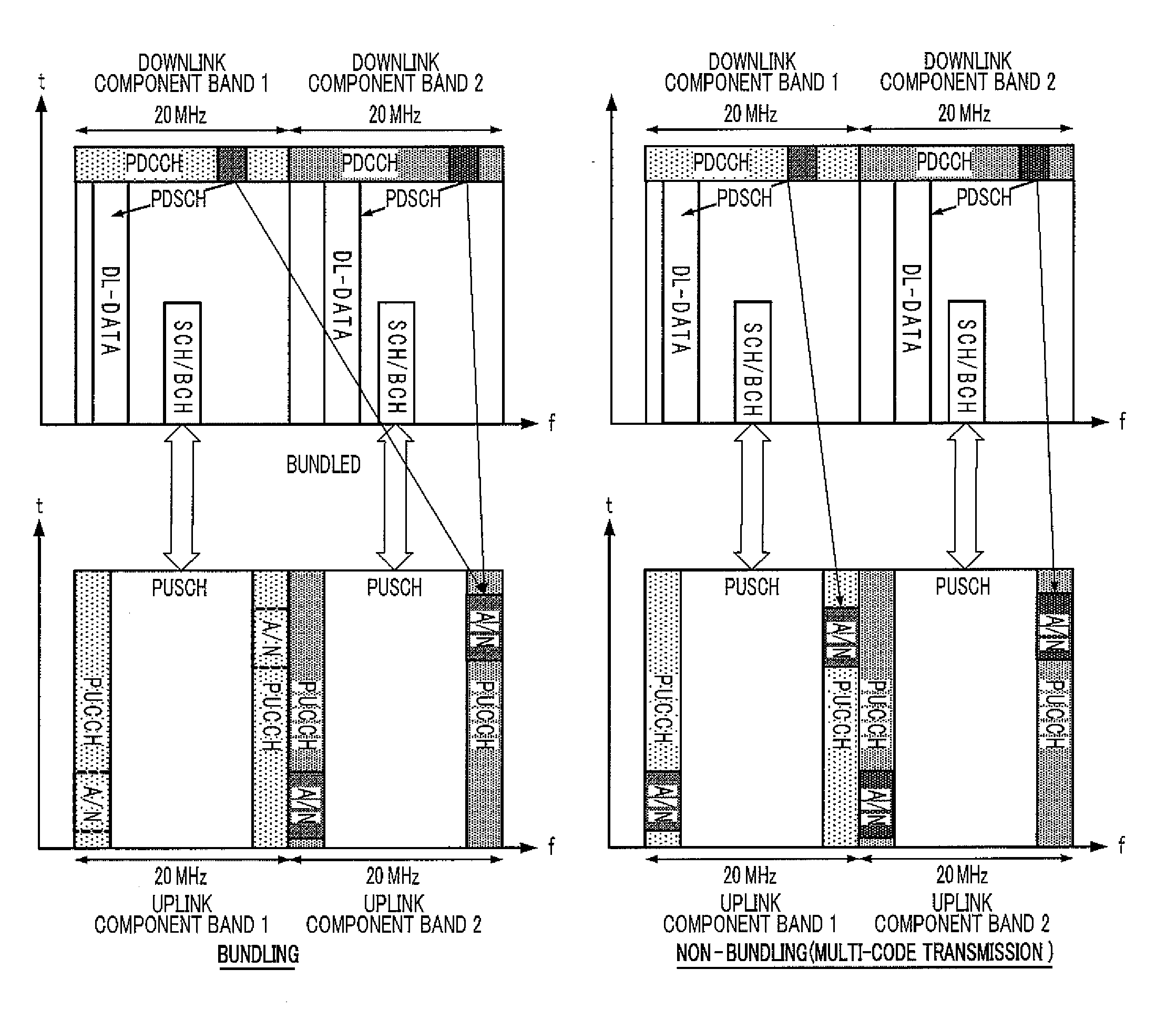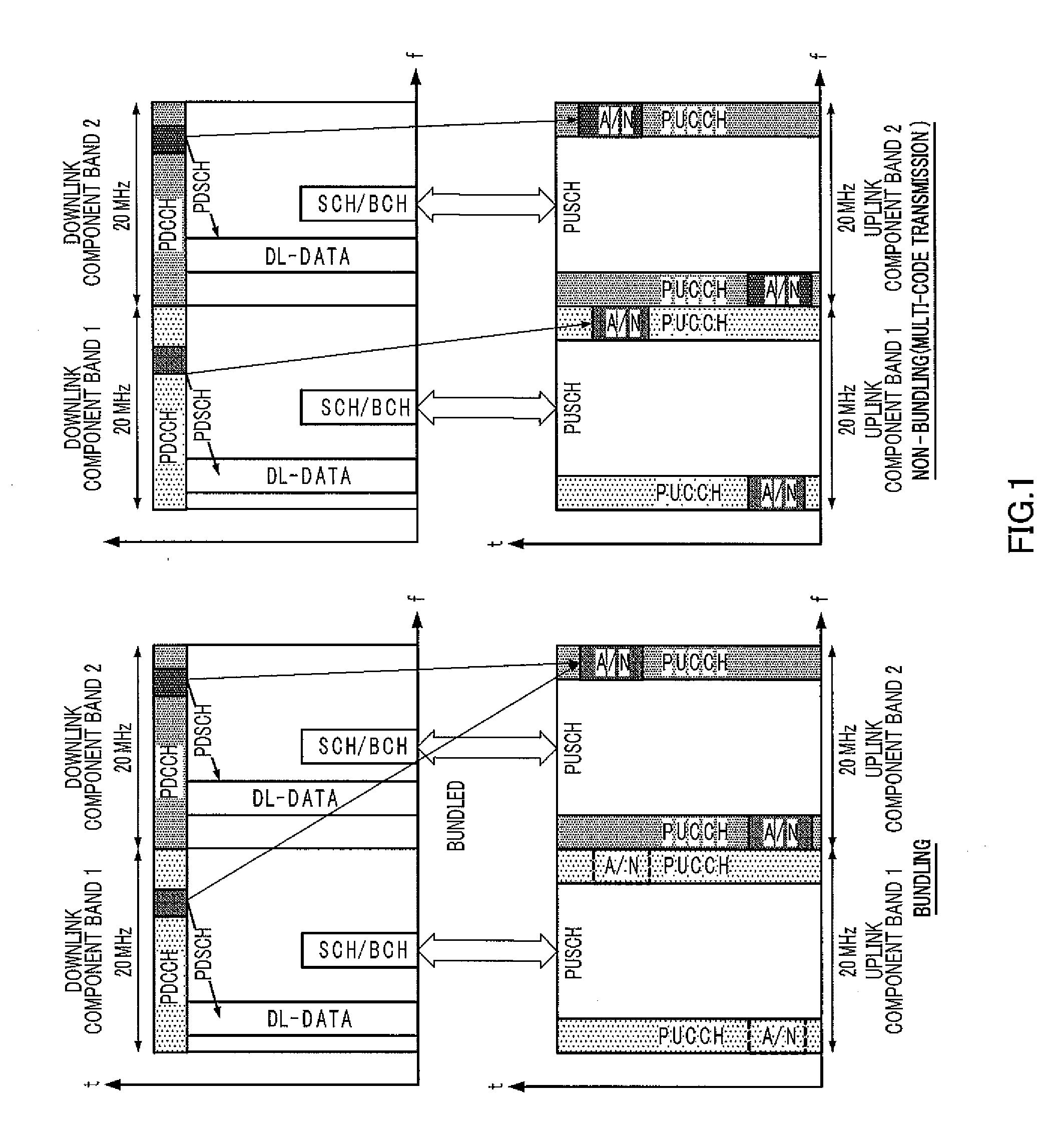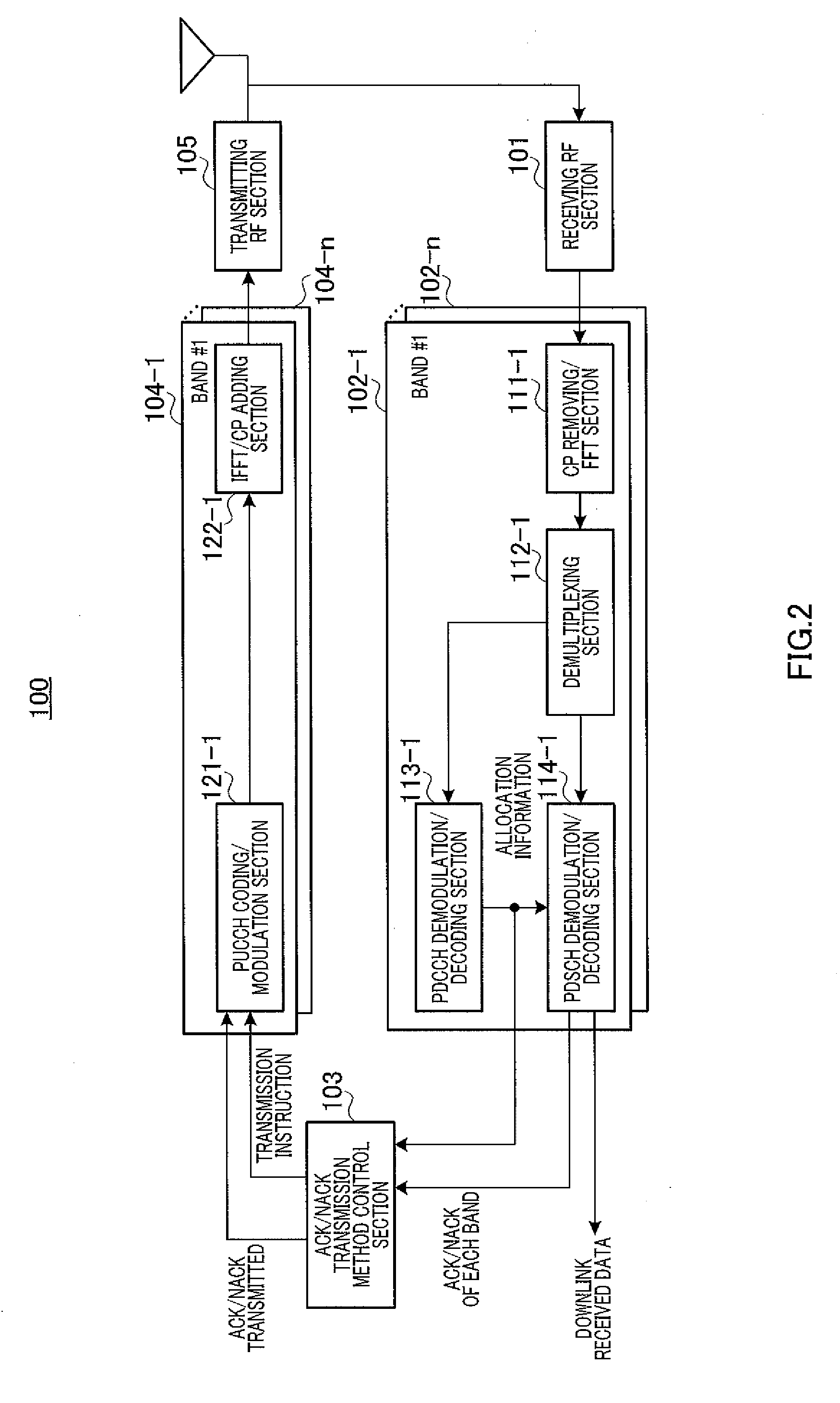Terminal, base station, response method, and retransmission control method
a response method and retransmission control technology, applied in the direction of wireless communication, transmission path sub-channel allocation, wireless commuication services, etc., can solve problems such as throughput degradation, increase the amount of interference in pucch, carrier characteristic collapse, etc., to prevent throughput degradation, without increasing the number of signaling bits
- Summary
- Abstract
- Description
- Claims
- Application Information
AI Technical Summary
Benefits of technology
Problems solved by technology
Method used
Image
Examples
embodiment 1
[0030][Configuration of Terminal]
[0031]FIG. 2 is a block diagram showing a configuration of terminal 100 according to Embodiment 1 of the present invention. In FIG. 2, terminal 100 includes receiving RF section 101, reception processing sections 102-1 to n, ACK / NACK transmission method control section 103, transmission processing sections 104-1 to n and transmitting RF section 105.
[0032]Receiving RF section 101 applies radio reception processing (down-conversion, A / D conversion or the like) to a received signal received via an antenna. This radio reception processing is performed on each downlink component band. That is, receiving RF section 101 also performs processing of demultiplexing the received signal into individual downlink component bands. The received signals of the respective downlink component bands (#1 to #n) obtained in receiving RF section 101 are outputted to reception processing sections 102-1 to n corresponding to downlink component bands #1 to #n respectively.
[003...
embodiment 2
[0112]Embodiment 2 uses a degree of distribution to each downlink component band using, as criteria, total resource quantities allocated to an arbitrary terminal among a plurality of downlink component bands as a whole used for carrier aggregation as a “base station transmission parameter.”
[0113]Since basic configurations of a base station and a terminal according to Embodiment 2 are common to those in Embodiment 1, these configurations will be described using FIGS. 2 to 5.
[0114]In terminal 100 of Embodiment 2, ACK / NACK transmission method control section 103 has a function similar to that of Embodiment 1. However, as described above, Embodiment 2 is different from Embodiment 1 in that the degree of distribution to each downlink component band is used as the “base station transmission parameter.”
[0115]To be more specific, in ACK / NACK transmission method control section 103, parameter calculation section 131 calculates the “base station transmission parameter” based on resource alloc...
embodiment 3
[0132]As a “base station transmission parameter,” Embodiment uses total allocated resource quantities allocated to an arbitrary terminal with respect to a total bandwidth of a plurality of downlink component bands used for carrier aggregation, that is, an occupancy of the arbitrary terminal in all downlink component bands (group of component bands used) used in the arbitrary terminal. Thus, it is possible to prevent system throughput degradation while giving priority to a terminal carrying out large-volume communication.
[0133]The basic configurations of the base station and the terminal according to Embodiment 3 are common to those of Embodiment 1, and therefore these configurations will be described using FIGS. 2 to 5.
[0134]ACK / NACK transmission method control section 103 in terminal 100 of Embodiment 3 has a function similar to that of Embodiment 1. However, as described above, Embodiment 3 is different from Embodiment 1 in that the occupancy (that is, terminal occupancy) of termi...
PUM
 Login to View More
Login to View More Abstract
Description
Claims
Application Information
 Login to View More
Login to View More - R&D
- Intellectual Property
- Life Sciences
- Materials
- Tech Scout
- Unparalleled Data Quality
- Higher Quality Content
- 60% Fewer Hallucinations
Browse by: Latest US Patents, China's latest patents, Technical Efficacy Thesaurus, Application Domain, Technology Topic, Popular Technical Reports.
© 2025 PatSnap. All rights reserved.Legal|Privacy policy|Modern Slavery Act Transparency Statement|Sitemap|About US| Contact US: help@patsnap.com



